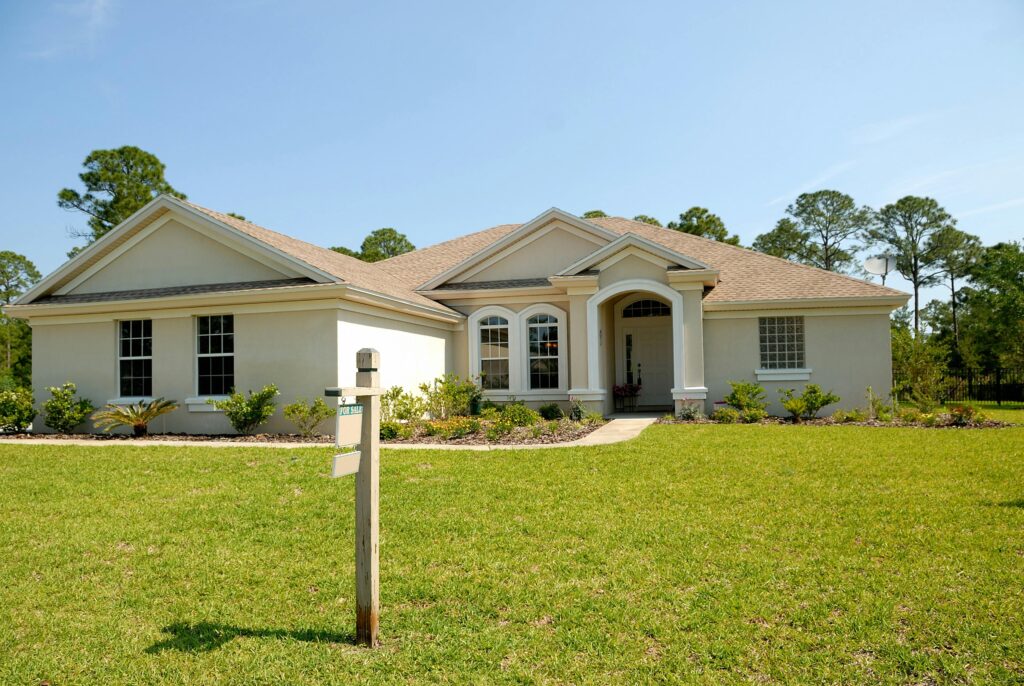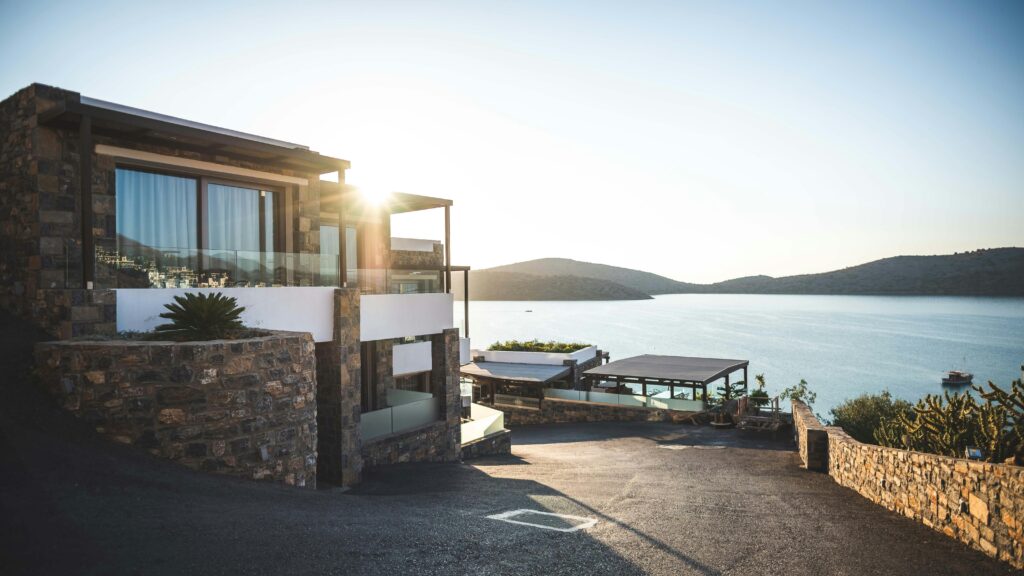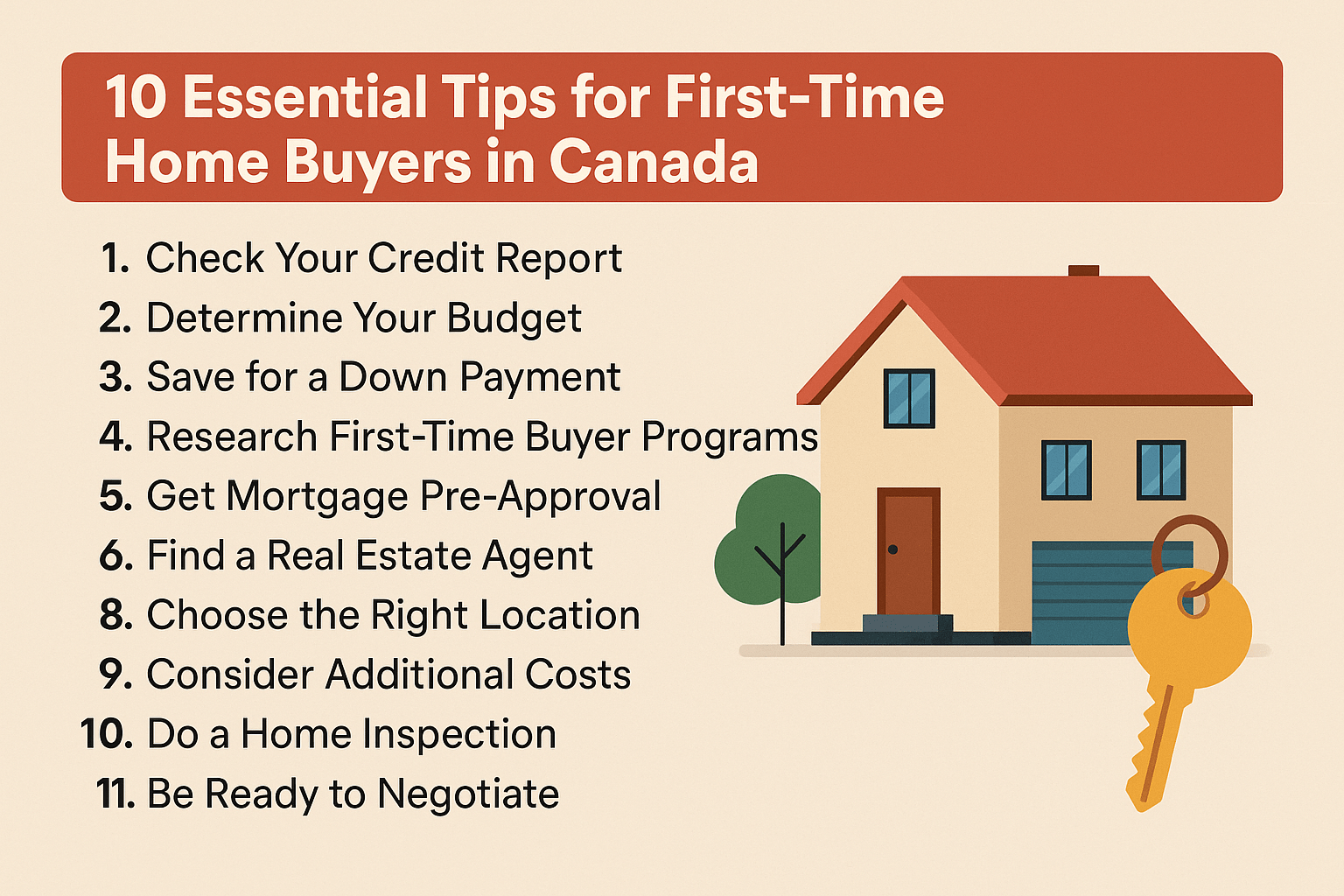Buying your first home in Canada is a significant milestone, but it comes with challenges like high property prices and a competitive market. With careful planning, you can navigate the process confidently. Below are 10 essential tips tailored for first-time home buyers, based on the latest information available as of April 28, 2025. These tips aim to make your journey smoother, more affordable, and less stressful.
1. Understand Your Budget
Before you start browsing listings, get a clear picture of your financial situation. Financial institutions recommend that your monthly housing costs—mortgage payments, property taxes, and heating—should not exceed 39% of your gross monthly income. Your total monthly debt load, including housing costs and other debts like credit cards or car loans, should stay below 44% of your gross income.
To estimate what you can afford, use online tools like the Mortgage Affordability Calculator or Mortgage Payment Calculator. These calculators help you set realistic expectations and avoid overextending yourself financially. Knowing your budget early on ensures you focus on homes within your means, saving time and reducing stress.

2. Get Preapproved for a Mortgage
Getting preapproved for a mortgage is a critical step. During preapproval, a lender reviews your credit score (ideally 680 or higher for traditional mortgages), income, and debt-to-income ratio to determine how much you can borrow. This process gives you a clear borrowing limit and makes you a more attractive buyer in a competitive market.
You’ll also need to pass the Canadian mortgage stress test, which ensures you can afford payments if interest rates rise. The stress test uses the higher of 5.25% or your offered rate plus 2%. Preapproval not only helps you shop with confidence but also speeds up the buying process, as you won’t need to wait for mortgage approval when making an offer. Contact a mortgage broker or bank to start this process early (Mortgage Pre-approval).
3. Save for a Down Payment Strategically
Saving for a down payment is often the biggest hurdle for first-time buyers. The minimum down payment depends on the home’s purchase price:
- 5% for homes under $500,000
- 5% on the first $500,000 and 10% on the portion between $500,000 and $1,000,000
- 20% for homes over $1,000,000
If your down payment is less than 20%, you’ll need mortgage default insurance, which adds a premium to your loan (ranging from 2.8% to 4.2% of the mortgage amount, depending on the down payment and amortization period). To save efficiently, consider tax-advantaged accounts:
- First Home Savings Account (FHSA): Contribute up to $8,000 annually, with a lifetime maximum of $40,000. Withdrawals are tax-free when used for a home purchase (First Home Savings Account).
- Registered Retirement Savings Plan (RRSP): Through the Home Buyers’ Plan (HBP), withdraw up to $60,000 tax-free for a down payment (increased from $35,000 as of April 16, 2024). Repayment is required within 15 years (Home Buyers’ Plan).
- Tax-Free Savings Account (TFSA): Save or invest tax-free, with no restrictions on withdrawals for home purchases.
Set up automatic transfers to these accounts to build your savings consistently. These options can significantly reduce the time it takes to reach your down payment goal.

4. Take Advantage of Tax Credits and Rebates
Canada offers several incentives to make homeownership more affordable for first-time buyers:
- Home Buyers’ Tax Credit: A non-refundable credit worth up to $1,500, which offsets closing costs like legal fees (Home Buyers’ Tax Credit).
- GST/HST New Housing Rebate: If you’re buying a newly built home, you may be eligible for a rebate on the GST/HST paid.
- Land Transfer Tax Rebates: Available in provinces like Ontario (up to $4,000), British Columbia (up to $8,000), Prince Edward Island (up to $2,000), and the City of Toronto (up to $4,475) (Land Transfer Tax).
- Proposed GST Exemption: As of April 28, 2025, there’s a proposal to eliminate the 5% GST on new homes priced under $1.3 million (or $1 million under another proposal). This could save buyers up to $50,000, but its implementation depends on the outcome of the federal election on April 28, 2025 (GST Exemption Proposal).
Additionally, check with your provincial or territorial government for other programs, such as Quebec’s additional tax credit of up to $750. These incentives can significantly reduce your upfront costs, so research eligibility criteria carefully.
5. Research the Market Thoroughly
Understanding the local real estate market is essential for making informed decisions. Use online platforms like Realtor.ca to explore current listings, compare prices, and track market trends in your desired area. These tools provide a snapshot of what’s available and help you gauge affordability.
Consider working with a real estate agent who specializes in your target region. Agents offer valuable insights into local conditions, upcoming developments, and properties that may not be listed online. They can also guide you through the negotiation process. Be aware that markets in major cities like Toronto and Vancouver are highly competitive, with bidding wars driving prices up. To avoid overpaying, set a firm budget cap before you start making offers.

6. Budget for Closing Costs
Closing costs are often overlooked but can add up quickly. These expenses typically include:
- Legal fees
- Land transfer taxes
- Home inspection costs
- Title insurance
- Moving expenses
On average, closing costs range from 1.5% to 4% of the home’s purchase price. For a $500,000 home, that’s between $7,500 and $20,000. Use a Closing Costs Calculator to estimate these expenses accurately. Some costs, like land transfer taxes, may be reduced or rebated if you qualify for first-time buyer incentives. Budgeting for these upfront costs ensures you’re not caught off guard when finalizing your purchase.
7. Assemble a Team of Professionals
Buying a home involves many moving parts, so it’s wise to surround yourself with experts:
- Real Estate Agent: Helps you find properties, negotiate offers, and navigate the market. Buyers typically don’t pay agent commissions, as these are covered by the seller.
- Mortgage Broker: Compares mortgage options from multiple lenders to secure the best rates and terms.
- Real Estate Lawyer: Ensures all legal aspects, such as contracts and closing documents, are handled correctly.
Each professional brings specialized skills that make the process smoother and less stressful. Choose team members with experience in your local market and a track record of working with first-time buyers.
8. Understand Your Mortgage Options
Mortgages come in various forms, and choosing the right one depends on your financial situation and risk tolerance:
- Fixed-Rate vs. Variable-Rate: Fixed-rate mortgages offer predictable payments, while variable-rate mortgages may start lower but can fluctuate with market changes.
- Amortization Period: As of December 15, 2024, first-time buyers can opt for a 30-year amortization period (up from 25 years), which lowers monthly payments but increases total interest paid (30-Year Amortization).
- Mortgage Default Insurance: Required if your down payment is less than 20%. Premiums range from 2.8% to 4.2% of the mortgage amount, depending on the loan-to-value ratio and amortization period (Mortgage Default Insurance).
Shop around for mortgage offers or work with a broker to compare rates. Understanding these options helps you select a mortgage that aligns with your long-term financial goals.
9. Be Prepared for Competition
In many Canadian markets, properties sell quickly, often above asking price due to bidding wars. To stand out, have your finances in order, including preapproval and a solid down payment. Be ready to act fast when you find a property you love, as hesitation can mean missing out.
However, don’t let the pressure of competition push you beyond your budget. Set a maximum offer amount and stick to it. Consult your real estate agent for advice on crafting a competitive yet reasonable offer. Walking away from a deal that exceeds your financial limits is better than overpaying and facing financial strain later.
10. Consider Long-Term Costs
Owning a home involves more than just the mortgage payment. You’ll need to budget for ongoing expenses, including:
- Property taxes (which can be bundled with your mortgage payment)
- Home insurance
- Maintenance and repairs
- Utilities
- Potential renovations
Factor these costs into your decision-making process to ensure you can afford your home in the long run. Also, consider lifestyle changes, such as the time and effort required for maintenance or the convenience of the home’s location for your daily commute and other needs. Thinking ahead helps you choose a home that fits both your budget and lifestyle.

Additional Considerations
For newcomers to Canada, additional steps may be required, such as building credit with a secured credit card or providing proof of income and immigration status. Non-residents may face taxes like the Non-Resident Speculation Tax (NRST), so consult a mortgage broker for guidance (Newcomer Mortgage Programs).
The Canadian housing market is influenced by external factors, such as potential U.S. tariffs on Canadian goods starting in 2025. These could lower fixed mortgage rates due to dropping bond yields (2.5%–2.6% range) but may also impact employment or wage growth, affecting borrowing capacity (Tariff Impact). Stay informed about these developments as you plan your purchase.
Final Thoughts
Buying your first home in Canada is a significant step that requires careful planning and research. By understanding your budget, getting preapproved, saving strategically, and leveraging government incentives, you’ll be well-equipped to navigate the challenges of the housing market. Assemble a team of professionals, research the market thoroughly, and prepare for competition to increase your chances of success.
While the process may seem overwhelming, it’s also an exciting opportunity to build your future. With these 10 tips, you’re better prepared to find a home that meets your needs and budget. Happy house hunting!


Leave a Reply